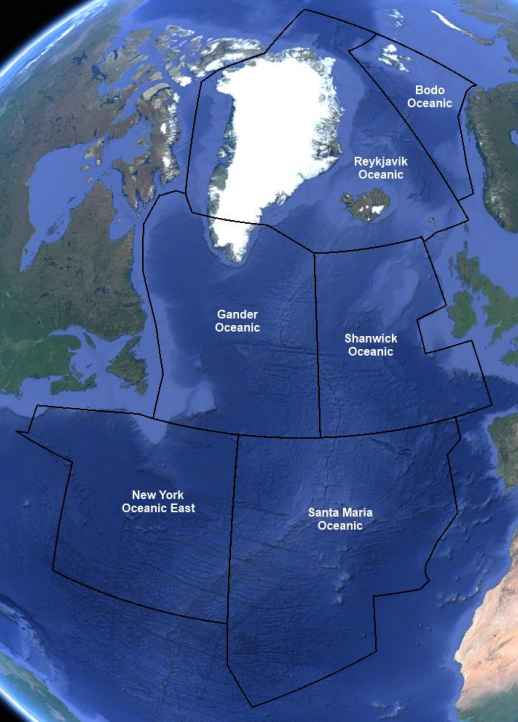Operators can apply to conduct operations in the North Atlantic High-Level Airspace (NAT HLA).
NAT HLA is a re-designation of the airspace formerly known as the North Atlantic Minimum Navigational Performance Specifications Airspace (NAT MNPSA). The re-designation to NAT HLA included:
- transferring from the older MNPS requirements
- condensing the current PBN and PBCS requirements.
This means operational data, such as AFM statements and pilot training records relating to MNPS compliance is no longer valid for NAT HLA applications. The NAT HLA is the volume of airspace between flight level (FL) 285 and FL 420 within the oceanic control areas of:
- Bodo Oceanic
- Gander Oceanic
- New York Oceanic East north of 27N
- Reykjavik
- Santa Maria
- Shanwick.
This excludes the Shannon and Brest Ocean Transition Areas.
This airspace of the North Atlantic links Europe and North America and is the busiest oceanic airspace in the world.
The required standards of horizontal and vertical navigation performance make sure there is:
- aircraft separation assurance
- acceptable level of safety.

Approval to operate in the NAT HLA
As an operator you must have approval from the State of Registry or State of the operator you are intending to operate in the NAT HLA.
You need approval from us to operate in the NAT HLA. To gain approval download and complete the following form:
Download Approval for operations in North Atlantic high-level airspace (NAT HLA) application.
Our approval process encompasses all aspects affecting the expected performance of:
- communication
- navigation
- surveillance
- flight crew training
- designation of appropriate standard operating procedures (SOPs)
- maintenance procedures to ensure continuing airworthiness.
You have restrictions on certain routes within the NAT HLA for operators depending upon the aircraft equipment. These limitations will be detailed in approval.
You must have specific aircraft communication, navigation and surveillance equipment certified to operate in the NAT HLA. You also must continue to maintain the required performance standards.
The operator must also demonstrate capability to operate and maintain airworthiness requirements for operations in the NAT HLA.

